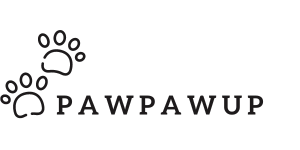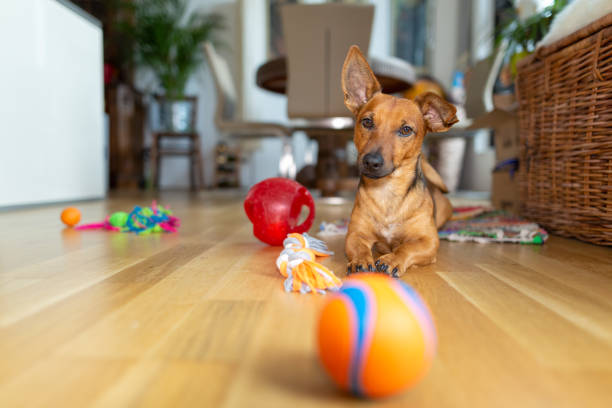Introduction: Why Questions Matter
A well‑chosen dog toy can transform an ordinary training session into an experience packed with focus, speed, and enthusiasm. Yet shelves and web pages fill with options that sparkle, squeak, glow, and promise miracles. Asking targeted questions before clicking “add to cart” narrows the field and ensures each dog toy you purchase becomes a reliable piece of training gear instead of clutter in a storage box. The following five questions create a decision tree that blends biomechanics, sensory science, and behavioural theory into a single, practical checklist you can apply any time a new dog toy captures your attention.

Question One: Does the Size Fit the Jaw and the Task?
Muzzle length, skull width, and interdental spacing vary widely from a Papillon to a Malinois. The first checkpoint examines geometry. A dog toy meant for powerful resistance work must allow molars to achieve a full, safe grip without forcing the temporomandibular joint beyond its neutral position. Conversely, a lightweight retrieval dog toy should be small enough to clear the ground but large enough that the dog cannot accidentally swallow it while accelerating. Measure the canine arcade, compare it with product dimensions, and visualise how the dog toy will sit between the premolars during peak exertion. If measurements fall into a grey zone, favour a slightly smaller profile for puppies whose adult dentition is still erupting; the same dog toy will remain useful after growth when combined with layered tug sleeves or bite pillows.
Question Two: Which Textures and Aromas Spark Genuine Engagement?
A dog’s trigeminal nerve network records the minute differences between rabbit hide, cotton webbing, and silicone ridges. Engagement rises when a dog toy presents sensory inputs that resonate with individual predilections. Some dogs bite down harder when the surface offers natural fur; others concentrate longer when the dog toy releases a faint scent of food. Observe spontaneous choices around the house: does the dog steal wool socks or target rubber flip‑flops? Translate that data into material selection. Remember that novelty fades, so rotate textures. A sheepskin‑laced dog toy may command attention in early stages, while a knotted jute dog toy keeps the drive alive after the game becomes familiar. Avoid treating texture as a trivial accessory; it is as critical as the load rating of the bungee handle.
Question Three: How Does Your Dog Express Drive During Play?
Drive manifests through chase, catch, tug, or dissect behaviours. Selecting a dog toy that complements the dominant component of drive channels energy into productive patterns. A chaser with a drag line caters to sprint‑and‑grab dogs that thrive on pursuit. A static tug encourages those who prefer head‑shakes and full‑body resistance. When a dog alternates, a modular dog toy with detachable elements covers both needs without overstuffing the gear bag. Assess arc of movement: does your companion launch vertically or dig into a crouch? Tailor the dog toy trajectory to that natural vector, preventing strain on lumbar vertebrae and handler wrists. Matching play style tightens technique and raises repetition quality, which ultimately shortens the time needed to mark a flawless behaviour.
Question Four: Will This Toy Integrate Smoothly With Handling Mechanics?
A trainer’s biomechanics mirror the dog’s. Handles padded with neoprene distribute load across metacarpal bones, letting the handler deliver consistent, even resistance. A dog toy that requires awkward wrist rotation introduces micro‑lags that confuse timing signals. Test grip orientation in the aisle—or mimic it with a resistance band if shopping online—before committing. Consider storage and travel logistics as part of handling; a collapsible dog toy with a paracord core fits a pocket, making spontaneous reinforcement at the park feasible, whereas a rigid launcher belongs in the dedicated training bag. Integration also involves maintenance: can the dog toy be cleaned within minutes so scent layers remain fresh without harbouring bacteria? A toy that takes an hour to dry will stay home more often, reducing its conditioning value.
Question Five: Does the Toy Align With Your Immediate Training Objective?
Every session carries a primary objective: a sharper recall, smoother heel, or crisper scent indication. Choose a dog toy that supports that single objective. For recall, place value in a high‑visibility object that stands out on grass, reducing search latency. For heelwork, pick a discreet pocket‑sized tug you can deploy without breaking stride. For indication work, a silent, scent‑neutral dog toy prevents auditory or olfactory contamination of the target odour. Resist impulse purchases triggered by bright colours or trending videos unless the dog toy brings you closer to the next measurable milestone. Keeping objectives explicit means each dog toy earns its space on the shelf through direct performance impact rather than novelty.

Closing Perspective: Turning Questions Into Habit
Integrating these five questions into your purchasing routine takes conscious repetition, but the payoff arrives quickly: sessions run cleaner, motivation stays high, and wastage drops. Each dog toy becomes a precision instrument calibrated to the unique biomechanics, sensory profile, and learning stage of your canine partner. Keep a small journal or digital note where you score prospective toys against the five questions. Over time, data trends reveal which categories consistently deliver value, streamlining future decisions. The training field evolves, new materials emerge, and marketing slogans grow louder, yet these questions remain steady reference points. When they guide every acquisition, the term dog toy evolves from a generic label into shorthand for a targeted, high‑performance tool that converts raw drive into skill—and transforms shared play into tangible progress.

